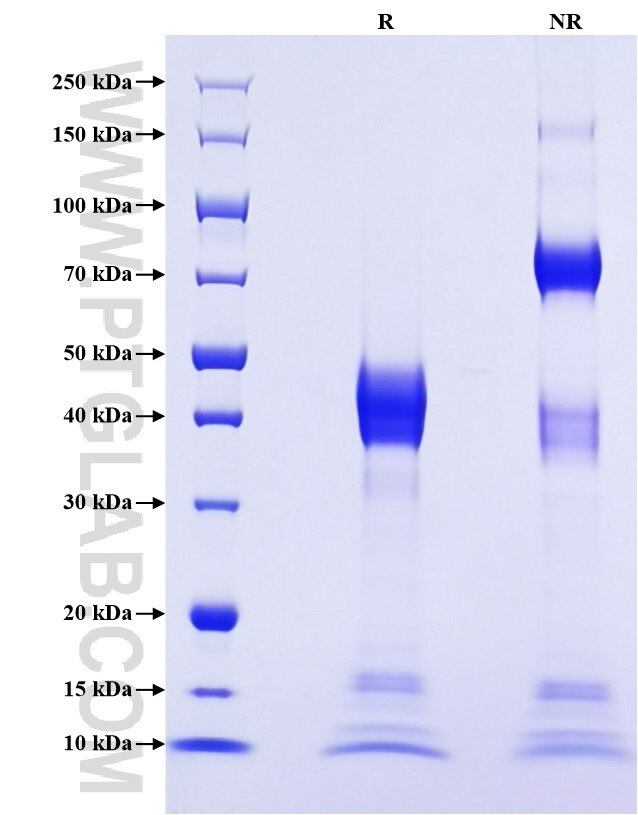Recombinant Human Amphiregulin protein (rFc Tag)
Species
Human
Purity
>85 %, SDS-PAGE
Tag
rFc Tag
Activity
not tested
Cat no : Eg4569
Validation Data Gallery
Product Information
| Purity | >85 %, SDS-PAGE |
| Endotoxin | <0.1 EU/μg protein, LAL method |
| Activity |
Not tested |
| Expression | HEK293-derived Human Amphiregulin protein Ser101-Lys187 (Accession# P15514) with a rabbit IgG Fc tag at the N-terminus. |
| GeneID | 374 |
| Accession | P15514 |
| PredictedSize | 37.3 kDa |
| SDS-PAGE | 10-16 kDa and 37-48 kDa, reducing (R) conditions |
| Formulation | Lyophilized from 0.22 μm filtered solution in PBS, pH 7.4. Normally 5% trehalose and 5% mannitol are added as protectants before lyophilization. |
| Reconstitution | Briefly centrifuge the tube before opening. Reconstitute at 0.1-0.5 mg/mL in sterile water. |
| Storage Conditions |
It is recommended that the protein be aliquoted for optimal storage. Avoid repeated freeze-thaw cycles.
|
| Shipping | The product is shipped at ambient temperature. Upon receipt, store it immediately at the recommended temperature. |
Background
Amphiregulin (AREG) is one of the ligands of the epidermal growth factor receptor (EGFR). AREG plays a central role in mammary gland development and branching morphogenesis in organs and is expressed both in physiological and in cancerous tissues. The AREG protein is synthesized as a 252-amino acid transmembrane precursor, pro-AREG. At the plasma membrane, pro-AREG is subjected to sequential proteolytic cleavages within its ectodomain and is then released as the soluble AREG protein. Depending on the cell type and microenvironment, AREG can be produced in multiple cellular and mature forms using alternative pro-AREG cleavage sites and glycosylation motifs.
References:
1. Brown C.L., et al. (1998). J Biol Chem. Jul 3;273(27):17258-17268. 2. Busser B, et al. (2011). Biochim Biophys Acta. Dec;1816(2):119-131. 3. McBryan J, et al. (2008). J Mammary Gland Biol Neoplasia. Jun;13(2):159-69.
